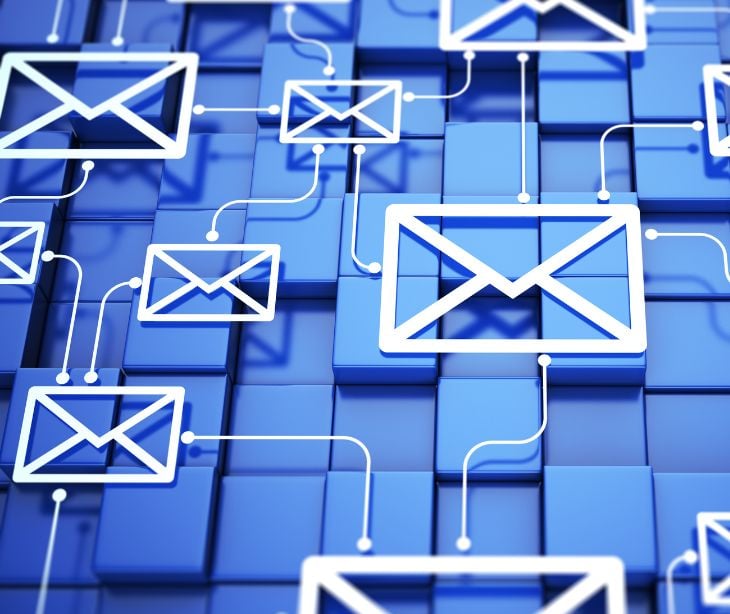
Emailing HIPAA forms is allowed if healthcare providers follow strict guidelines. By using secure methods and understanding when it's appropriate to use email, healthcare organizations can communicate digitally while keeping patients' sensitive information safe.
Understanding risks and striking a balance
Emailing HIPAA forms, particularly those containing protected health information (PHI), is a common practice but not without risks. Email transmission can expose sensitive information to unintended recipients or potential interception. Whether a HIPAA form can be emailed depends on the safeguards in place to ensure compliance with HIPAA regulations.
Healthcare organizations must weigh the convenience of email communication against the need to protect patient privacy. To align with HIPAA, any email containing PHI must be encrypted during transmission and access-controlled to authorized recipients. Patients should also provide written consent acknowledging the use of email for sharing sensitive information.
The minimum necessary standard helps guide this process. According to the U.S. Department of Health and Human Services (HHS), this principle requires limiting the access, use, and disclosure of PHI to only the information necessary for the intended purpose. For example, when emailing a HIPAA form, it’s beneficial to include only the sections relevant to the recipient's role or request.
Read more: What is the Minimum Necessary Standard?
Best practices for emailing PHI
To comply with HIPAA regulations, healthcare providers that are not using a secure platform like Paubox, should follow these rules when emailing forms that include sensitive data:
Limit information
Include only the necessary information for clinical or billing purposes in emails. Avoid transmitting highly sensitive PHI, such as mental health or substance abuse information, whenever possible.
Avoid automatic forwarding
Refrain from using global automatic forwarding to non-institutional email accounts.
Verify the recipient's address
Double-check recipient email addresses for accuracy to prevent misdirected messages.
Include a privacy statement
Acknowledge email communication's potential insecurity and provide contact information for reporting misdirected messages.
Managing misdirected emails
While guidelines try to minimize privacy breaches, they cannot eliminate the possibility. Reporting misdirected emails containing PHI is a necessity, and healthcare providers should be aware of any additional institutional restrictions.
Related: Understanding HIPAA violations and breaches
Email encryption and security measures
Email encryption is necessary for safeguarding PHI. It encodes the email content, making it unreadable to unauthorized individuals. HIPAA does not explicitly prohibit email use for PHI transmission but requires safeguards.
Read more: Encryption in healthcare: The basics
Secure email platforms
Not all email platforms are HIPAA compliant. Choose platforms such as Paubox that meet encryption standards, provide secure logins, encryption at rest and in transit, and secure email storage. Audit trails on these platforms monitor information access, meeting HIPAA requirements.
See also: HIPAA Compliant Email: The Definitive Guide
Consent and authorization
Obtaining patient consent is necessary before transmitting PHI via email. Patients should be informed of risks and provide explicit consent, acknowledging the security measures in place. This transparency empowers patients in their decisions regarding electronic health information exchange.
See more: How to obtain patient consent for email communication
Training and education
Beyond technology, HIPAA compliance involves educating healthcare professionals and staff. Training programs should cover proper email use, the importance of encryption, and the necessity of obtaining patient consent. This education ensures responsibility and compliance with HIPAA standards.
The solution: Paubox forms
Paubox provides HIPAA compliant forms by offering a secure and user-friendly online form solution tailored for healthcare organizations. With Paubox Forms, healthcare providers can easily create custom forms using an intuitive drag-and-drop interface, ensuring seamless design and customization. These forms are built to be HIPAA compliant from the ground up, incorporating strong security measures such as encryption and access controls to protect patient data. Patient information collected through these forms is stored securely in an encrypted format, ensuring confidentiality. Additionally, Paubox Forms integrates smoothly with popular electronic health record (EHR) systems, facilitating the transfer of patient data. This solution streamlines various administrative tasks, from patient intake and emergency contact updates to informed consent and post-treatment check-ins, enhancing efficiency while maintaining strict compliance with HIPAA regulations.
Learn more: Paubox Forms | HIPAA compliant forms that's easy to use
FAQs
What is a HIPAA compliant form?
A HIPAA authorization form permits covered entities to use protected health information for purposes other than treatment, payment, or healthcare operations.
What is an authorization form?
An authorization form is a document duly endorsed by an individual or organization that grants permission to another individual or organization to proceed with certain actions.
Are Paubox's online forms customizable?
Yes, Paubox's online forms are highly customizable. Healthcare providers can create forms tailored to their specific requirements using the intuitive form builder.
How secure are Paubox's online forms?
Paubox's online forms are designed to be HIPAA compliant and incorporate industry-standard security measures, including encryption and access controls, to protect patient data.
Can Paubox's online forms be accessed on mobile devices?
Yes, Paubox's online forms are responsive and can be accessed and completed on any device with an internet connection.
Learn more: HIPAA Compliant Email: The Definitive Guide
Subscribe to Paubox Weekly
Every Friday we'll bring you the most important news from Paubox. Our aim is to make you smarter, faster.



